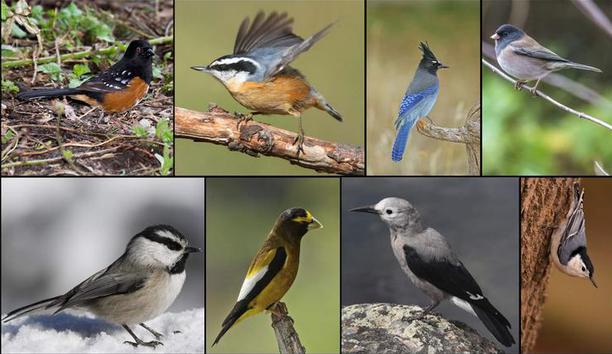saveourplanetearth.com
Call us: (775) 831-1331
The Great Backyard Bird Count
Coming up this weekend is the Great Backyard Bird Count (GBBC), an opportunity for any person to become a “citizen scientist” — an ordinary person who aids scientists in the understanding of the natural world. It’s free, fun, easy and for the birds!
The 17th annual Great Backyard Bird Count takes place February 14-17, an event that unites bird lovers all over the world. Last year, over 34.5 million birds were recorded by participants in 111 countries, with close to 135,000 checklists being submitted. That’s cooperation and that’s really cool!
Here’s what to do if you want to participate:
1. Start by creating an account at www.BirdCount.org or www.ebird.org, where you will also find step-by-step instructions and tips.
Start by creating an account at www.BirdCount.org or www.ebird.org, where you will also find step-by-step instructions and tips.
2. Follow the directions and map your location.
Follow the directions and map your location.
3. View the supplied list of birds to be watching for in your area.
View the supplied list of birds to be watching for in your area.
4. On one or all of the days, spend at least 15 minutes scouting, counting and identifying birds. Take pictures if you can; if you get a good one, you can enter it into the GBBC photo contest.
On one or all of the days, spend at least 15 minutes scouting, counting and identifying birds. Take pictures if you can; if you get a good one, you can enter it into the GBBC photo contest.
5. Go back to your account and enter your list(s).
Go back to your account and enter your list(s).
Don’t despair if you’re not an expert birder. Prior to heading out into the field, download the free Merlin Bird ID App for your phone at merlin.allaboutbirds.org. The app includes professional bird photos, sounds, range maps and will customize the search to birds specific to your area. It will ask you five simple questions on characteristics of the bird you are seeing, hopefully leading you to be able to identify it.
I queried Kirk Hardie, Co-Executive Director and Director of Science Education at the Tahoe Institute for Natural Science to develop a list of birds that we might expect to see here in the Lake Tahoe area during the count. This is not a comprehensive list but between us, we came up with these birds to watch for:
The suggested bird list that you will find when you sign up is much longer and includes birds that will only be seen here in the summer but having both lists handy when bird watching could help you identify the birds that you see.
The GBBC is a joint effort between the Cornell Lab of Ornithology and the Audubon Society, with partner Bird Studies Canada, along with many other international partners and is sponsored in part by Wild Birds Unlimited. Scientists use the data collected to form a “big picture” of what is happening with bird populations world-wide. You can browse the data collected from past GBBCs at birdcount.org.
This data collected from ordinary people like you and me helps scientists track the movement of species around the world and to determine how bird populations are affected by environmental changes. No single scientist or team of scientists could come close to harnessing all of the information that is compiled in the four days of the GBBC.
The GBBC was started in 1998 by the Cornell Lab of Ornithology and the Audubon Society and was the first online citizen-science project to collect data on wild birds AND display results in near real-time. The two organizations launched the eBird platform in 2002 to engage participants in recording bird observations year-round. In 2010, eBird expanded from North America to invite global participation. Last year, eBird and the GBBC merged, enabling the count to go global for the first time.
This year’s count begins on Friday so familiarize yourself with the tools that are available on ebird.org, the portal for entering your observations. Now that you’re addicted to bird watching, you’ll want to continue to record your future bird sightings into your free eBird account. In a few years, you’ll have an impressive collection of species that you have come to know and recognize. This year’s Great Backyard Bird Count could be just the beginning of a fascinating new hobby. See also tinsweb.org for other local citizen-science projects.
1. Steller’s jay
2. Mountain chickadee
3. Red-breastednutch
4. White-breasted nuthatch
5. Pygmy nuthatch
6. Clark’s nutcracker
7. Dark-eyed junco
8. White-headed woodpecker
9. Brown creeper
10. Common raven
11. Spotted towhee
12. Mourning dove
13. Bald eagle (if you’re very lucky!)
14. Evening grosbeak
15. Canada goose



